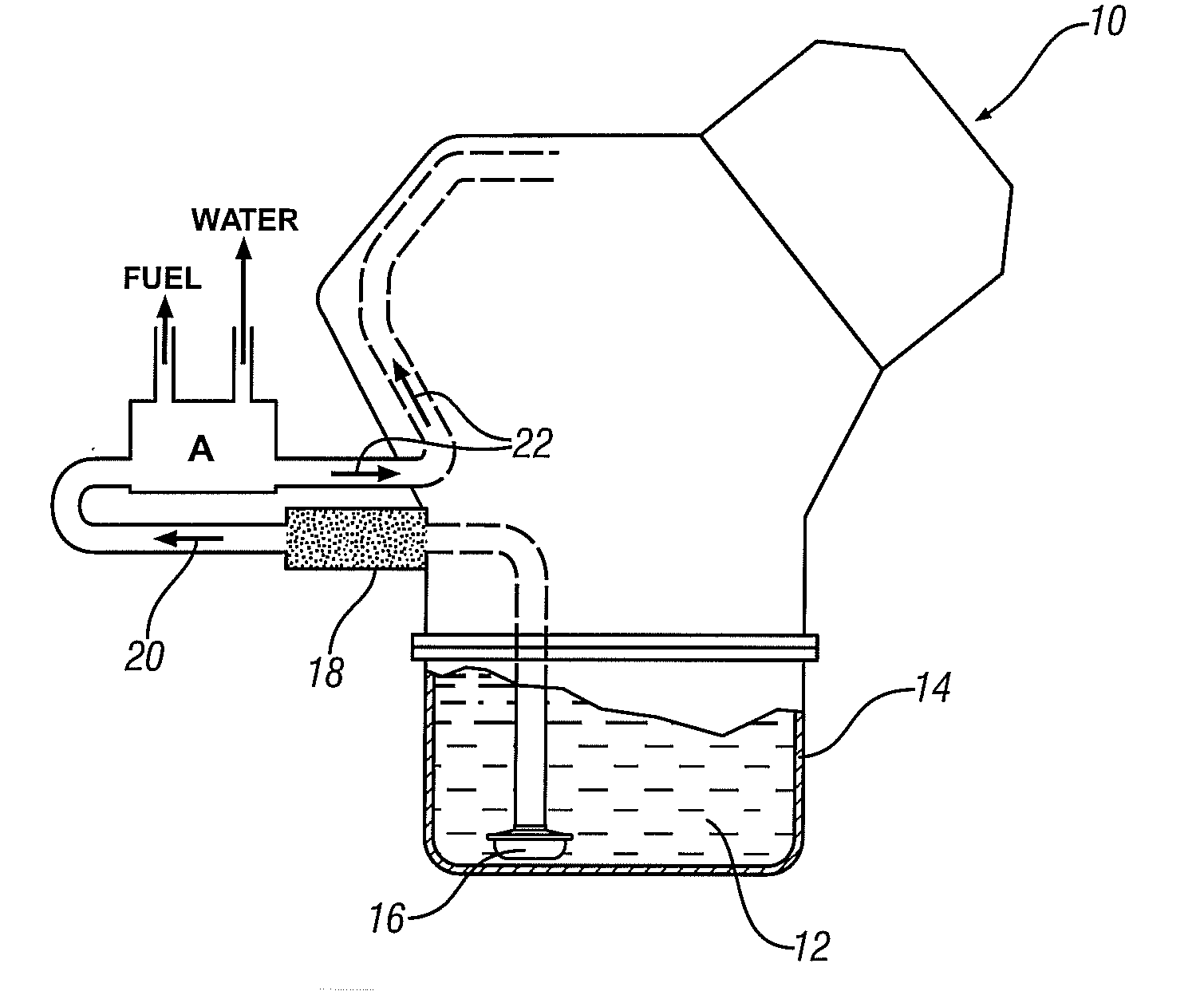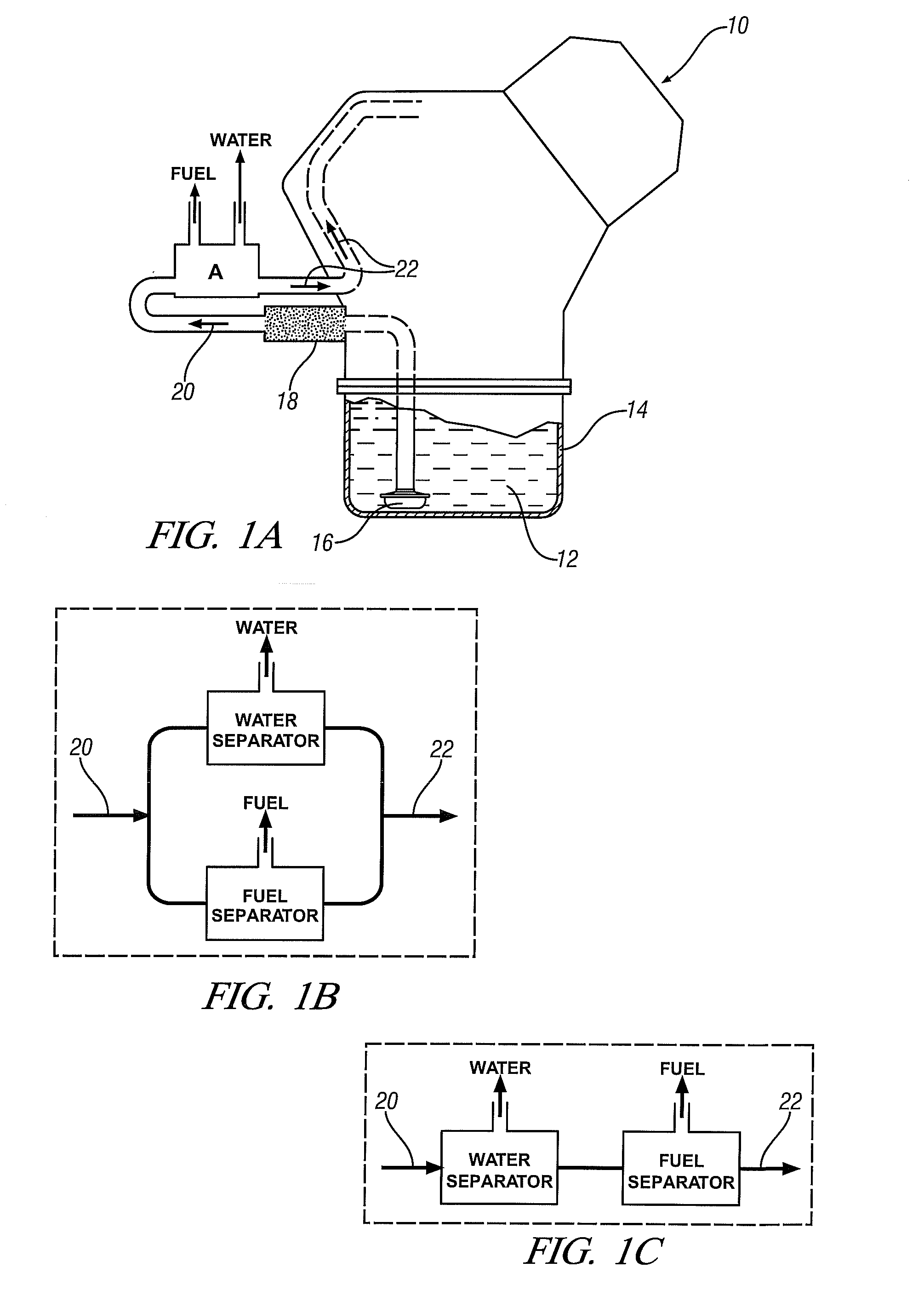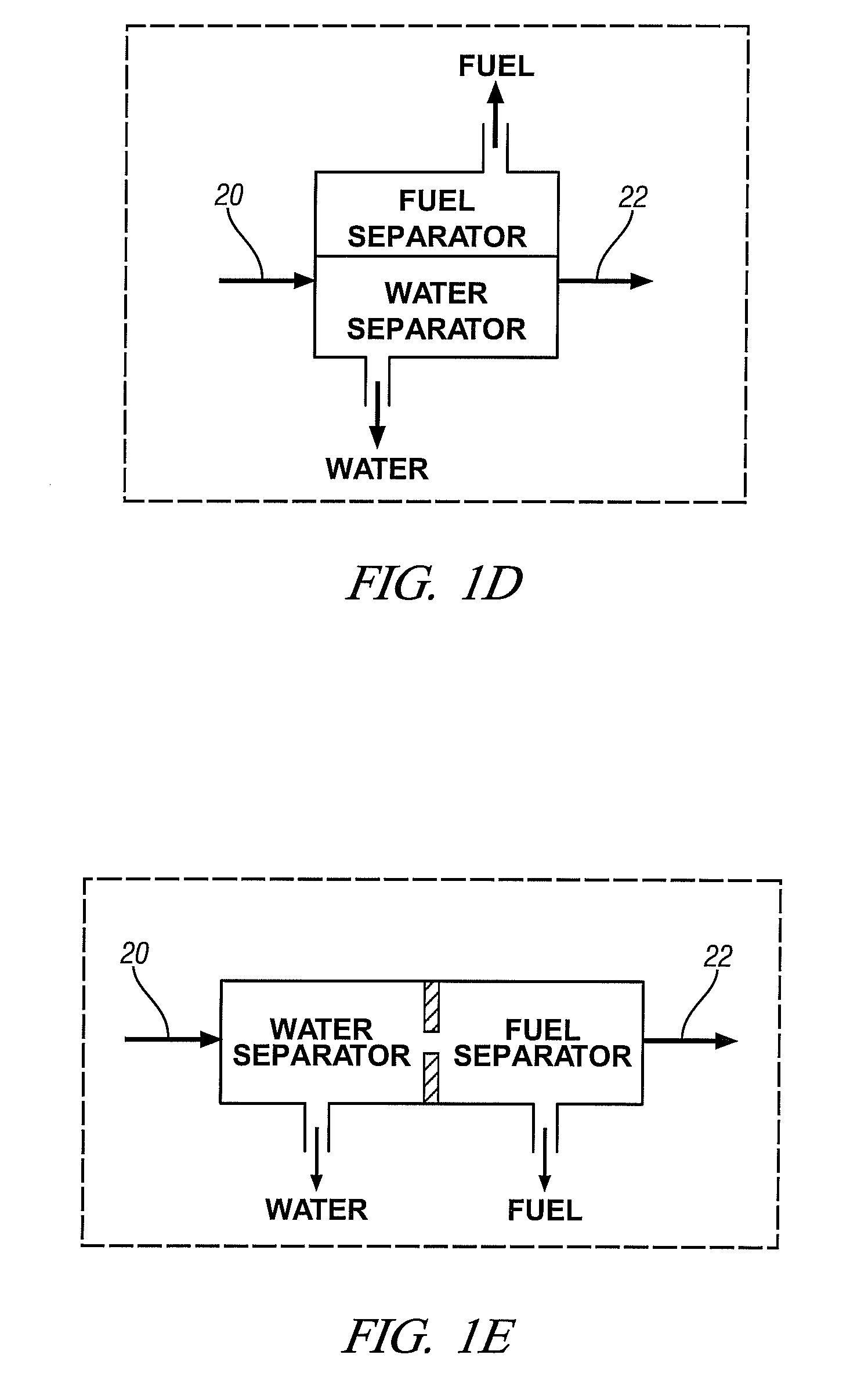Membrane separation of water and fuel from engine oil in an internal combustion engine
a technology of engine oil and membrane, which is applied in the direction of membrane, lubricant mounting/connection, multi-stage water/sewage treatment, etc., can solve the problems of ejecting oil, accumulating water in oil, unburned fuel, etc., and achieves the effect of cleaning the relatively cold oil
- Summary
- Abstract
- Description
- Claims
- Application Information
AI Technical Summary
Benefits of technology
Problems solved by technology
Method used
Image
Examples
example
[0040]Cross-flow test modules in the design shown in FIG. 2 were fabricated using regenerated cellulose fiber obtained from Membrana / Celgard, Germany. The fibers had an inner diameter of 200 micrometers, a wall thickness of 8 micrometers, an effective pore diameter of 4-6 nanometers and a glass transition temperature of greater than 150° C. The test modules comprised a bundle of 300 fibers 16 cm long and the test mixture was continually circulated through the fibres at a flow rate of about 1.5 grams / minute under passage of sweep gas. At about 65° C., under an initial water content of 2.1 percent by weight an overall mass transfer coefficient of about 7.0×10−5 centimeters per second was observed. Further, increasing the oil flow indicated that further performance improvements were possible and an overall mass transfer coefficient of about 7.0×10−5 centimeters per second was observed at an oil flow rate of about 25 grams / minute.
[0041]The results described above were obtained using onl...
PUM
 Login to View More
Login to View More Abstract
Description
Claims
Application Information
 Login to View More
Login to View More - R&D
- Intellectual Property
- Life Sciences
- Materials
- Tech Scout
- Unparalleled Data Quality
- Higher Quality Content
- 60% Fewer Hallucinations
Browse by: Latest US Patents, China's latest patents, Technical Efficacy Thesaurus, Application Domain, Technology Topic, Popular Technical Reports.
© 2025 PatSnap. All rights reserved.Legal|Privacy policy|Modern Slavery Act Transparency Statement|Sitemap|About US| Contact US: help@patsnap.com



